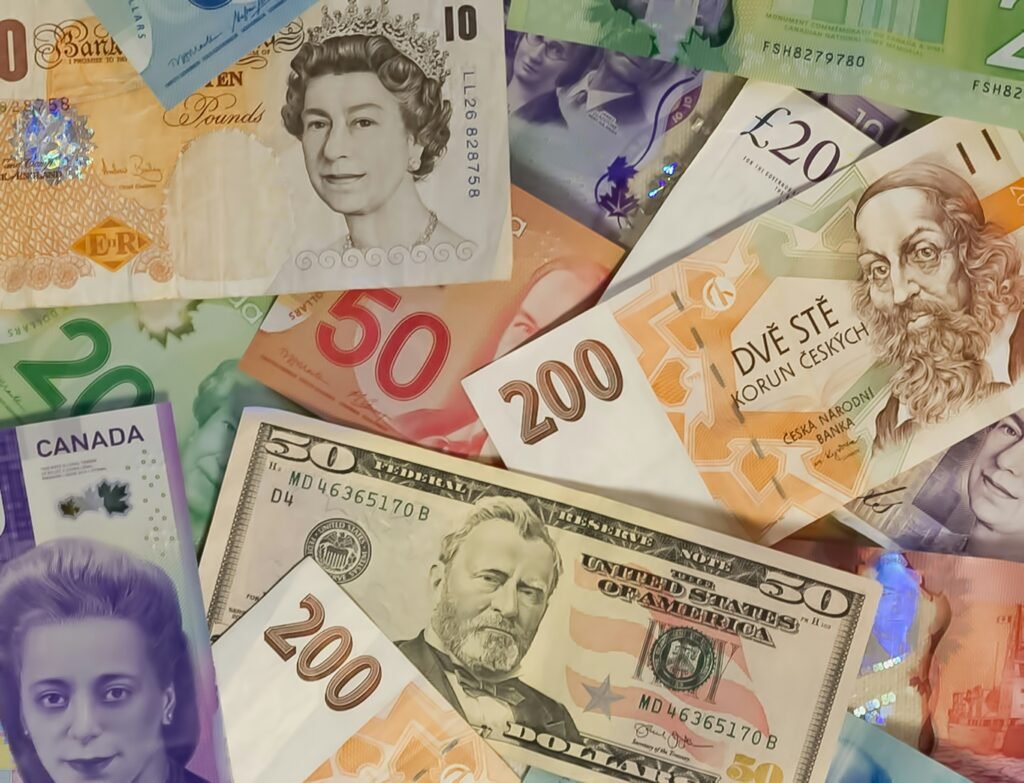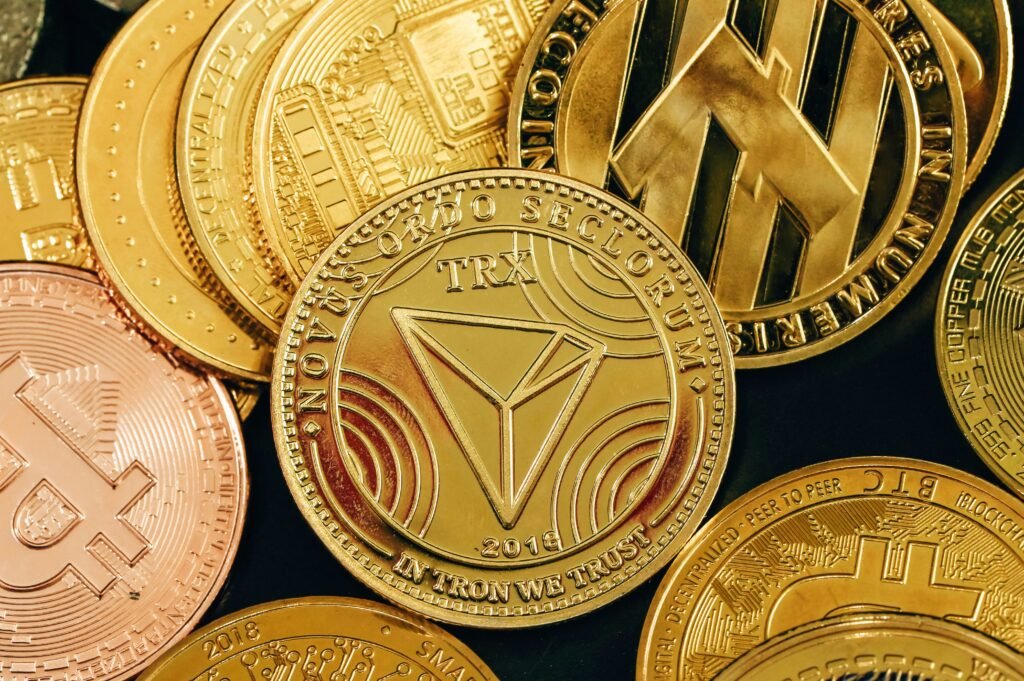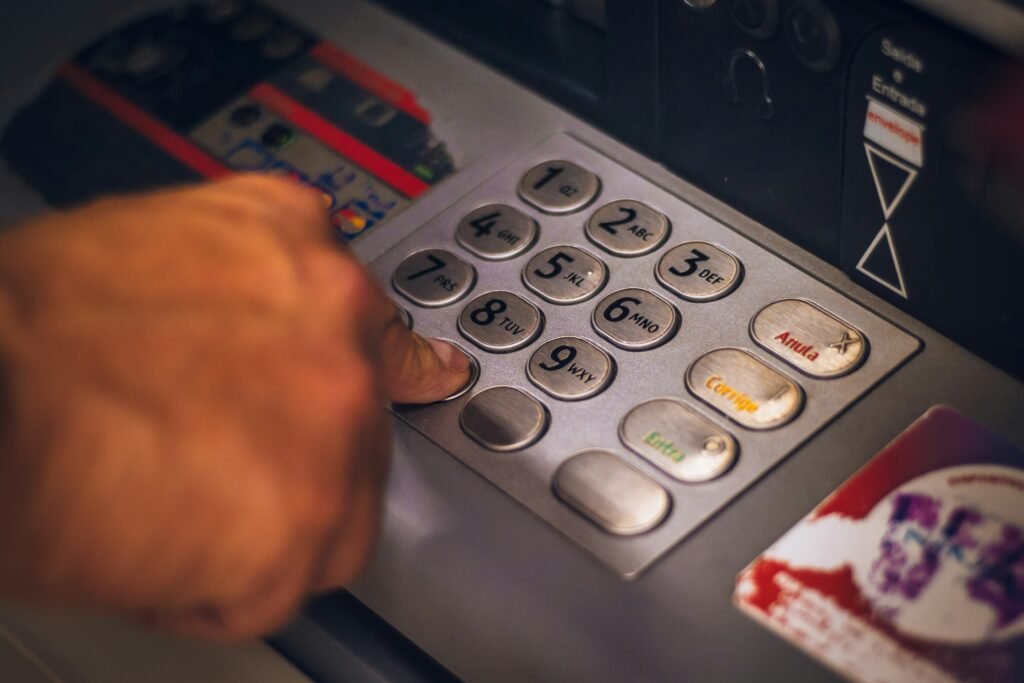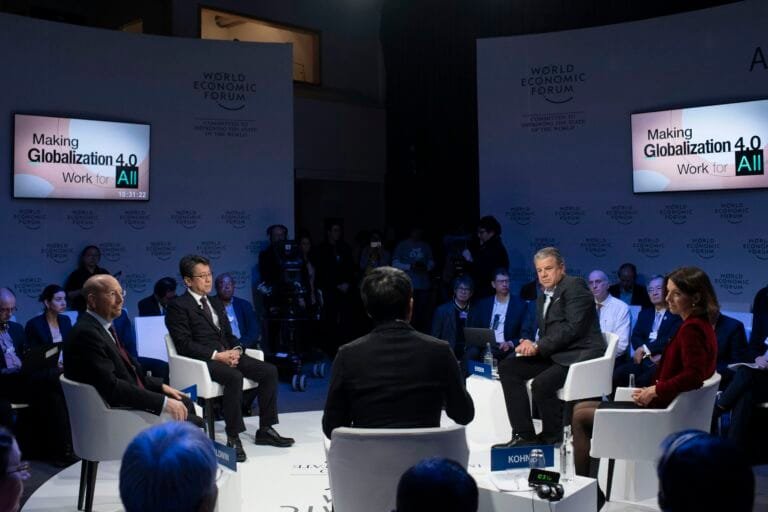
Introduction: The Origin of Trade and Barter
The roots of trade are deeply embedded in the ancient practice of bartering, a method whereby people directly exchanged goods and services. This nascent form of economic interaction is believed to have commenced around 6000 BC among Mesopotamian tribes, who laid the groundwork for future trading practices. The Phoenicians, known for their vibrant trade networks, later adopted and enhanced bartering, spreading its use across different cultures and regions.
In its essence, bartering is a simple exchange—two parties negotiate a mutually beneficial trade without involving any intermediary medium of exchange. For instance, a farmer could trade livestock for grains, or a craftsman could swap tools in exchange for other essential commodities. Grains, livestock, and tools frequently surfaced as the items of choice due to their utility and widespread demand, marking them as foundational barter items in early trade systems.
Despite its straightforward nature, bartering presented inherent limitations. One significant drawback was the need for a “double coincidence of wants.” Both parties involved in the transaction had to desire what the other offered at the same time, making transactions cumbersome and inefficient. Additionally, the absence of a standard unit of monetary value hindered complex trades and posed valuation challenges, limiting the scope and scale of exchanges.
These limitations gradually highlighted the necessity for a more efficient trading mechanism. The inconvenience of direct exchanges and the difficulties associated with determining equivalencies emphasized the need for an intermediary that could streamline processes and facilitate more extensive trade networks. Thus began the evolution towards more sophisticated economic systems, paving the way for the development of money as a commonly accepted medium of exchange.

Early Currency: The Advent of Commodity Money
As societies grew increasingly complex, the limitations of the barter system became apparent. The direct exchange of goods and services often required precise matching of needs, making transactions cumbersome and inefficient. To address these challenges, early civilizations gradually shifted toward the use of commodity money—items that possess intrinsic value and are widely accepted in exchange for goods and services. This marked a significant evolution in the history of money, laying the foundation for more advanced forms of currency.
Various commodities were chosen as early forms of money due to their inherent qualities. Metals like gold and silver surfaced as popular options, primarily because of their durability and divisibility. These metals did not corrode easily, ensuring that they retained their value over long periods. Additionally, they could be divided into smaller units, facilitating transactions of different scales. Their aesthetic appeal and rarity further enhanced their value, making them desirable across various cultures and time periods.
Agricultural products such as grain and rice also served as forms of commodity money in numerous agrarian societies. These commodities were critical for sustenance and thus held significant inherent value. However, their practicality was somewhat limited by factors such as perishability and bulkiness, which hindered their widespread usage as a stable form of currency.

The selection of these commodities was not arbitrary but rather driven by several factors, including availability, longevity, and ease of transportation. Importantly, their inherent or intrinsic value—their value independent of any external factors—was a key criterion. Items with intrinsic value were more likely to be accepted widely, easing trade and economic interactions. This intrinsic value concept explains why commodities like precious metals were favored over, say, common stones or shells, which lacked universal desirability and long-term value retention.
Thus, the transition to commodity money represented a critical evolutionary step in the development of economic systems, facilitating smoother and more efficient trade. By adopting items with intrinsic value, early societies laid the groundwork for more sophisticated monetary systems that would follow in the subsequent phases of history.
The First Coinage: Lydians and the Birth of Metallic Money
In the annals of economic history, the year 600 BC stands as a pivotal moment. It is in this era that the Lydians, an ancient civilization located in modern-day Turkey, are credited with minting the first known coins. This development marked the transition from primitive barter systems to a more sophisticated form of trade using metallic money. Prior to this innovation, trade was hampered by the inefficiencies and complexities of barter systems, where the value of goods was often subjective and inconsistent. The advent of coinage provided a standardized medium for transactions, thereby enhancing trade efficiency and reliability.
These early Lydian coins were crafted from electrum, a naturally occurring alloy of gold and silver. Each coin bore a stamp, typically of a lion’s head, which authenticated its value and guaranteed its purity. This standardization was revolutionary. It mitigated many of the issues that plagued barter systems, such as the difficulty in evaluating and comparing the worth of diverse goods. The intrinsic value of the metal, coupled with the guarantee from a credible issuing authority, reduced the risk of fraud and counterfeit, hence fostering trust and facilitating smoother commercial exchanges.
The Lydians’ innovation didn’t remain confined to their territory for long. The concept of metallic money quickly spread to neighboring civilizations, influencing economies far and wide. The Greeks and Persians, for instance, adopted and further refined the practice of coinage, embedding it deeply within their own trade networks. This widespread adoption underscores the significant advantages that metallic money offered over earlier trade systems. Coins, being portable and durable, not only simplified transactions but also enabled the storage and accumulation of wealth in a more tangible and secure form.


By minting the first coins, the Lydians set a precedent that would shape economic practices for centuries to come. Their introduction of metallic money was a foundational development in the history of finance, steering ancient economies towards greater sophistication and stability. The Lydian influence in the arena of coinage is a testament to their role in evolving the mechanics of trade, establishing principles that underpin monetary systems even in the modern era.
The Emergence of Paper Money
The history of money took a significant turn when paper money emerged in China around 1020 AD. Originally, these were promissory notes issued by merchants and backed by precious metals, which made transactions more manageable and portable compared to cumbersome metal coins. The Tang and Song dynasties saw the formalization of this practice, culminating in state-issued paper currency.
One of the primary advantages of paper money was its portability. Unlike heavy metal coins, these lightweight notes could be carried effortlessly, facilitating trade over greater distances. This ease of transport not only accelerated the pace of commerce but also catalyzed the growth of more complex, national, and even international trade networks.

The societal impacts were profound. The use of paper money ushered in increased economic activity and the expansion of markets, contributing to significant advancements in the local and international economy. Merchants and traders could now conduct business more efficiently, promoting economic growth and increasing the diversity of available goods and services. Such efficiencies were not possible under the earlier barter system or with cumbersome metal coinage.
However, the introduction of paper currency came with its own set of challenges, notably the issue of counterfeiting. In its nascent stages, the threat of counterfeit money posed a risk to the stability and trust in the new financial system. The Chinese government responded to this threat by implementing sophisticated measures such as elaborate design elements, intricate paper manufacturing techniques, and official seals to differentiate genuine notes from counterfeits. Over time, technological advancements continued to improve security features to protect against forgery.
The shift to paper money marked a pivotal moment in economic history, setting the stage for modern financial systems and practices. The adoption of paper currency significantly influenced global trade, setting a precedent for future monetary innovations and economic stability.

Modern Developments: Credit and Plastic Money
The 20th century ushered in a significant transformation in financial transactions with the advent of credit and plastic money. The introduction of credit cards revolutionized the way individuals approached spending and saving, offering unprecedented convenience and flexibility. The first universal credit card, introduced by Diners Club in 1950, permitted cardholders to purchase goods and services on credit, creating a paradigm shift in consumption patterns. The rise of credit cards enabled consumers to buy and pay later, fostering a culture of instant gratification.
Banking institutions played a critical role in the proliferation of credit cards. They facilitated widespread adoption by offering consumers various benefits such as rewards programs, fraud protection, and revolving credit lines. These incentives, coupled with marketing strategies, significantly increased the prevalence of credit cards in everyday transactions. The Mastercard and Visa networks, established in the 1960s, further standardized and expanded the use of credit cards globally, setting the stage for the modern financial ecosystem.
In parallel, the introduction of debit cards provided an alternative that tied directly to consumers’ bank accounts, expanding the landscape of plastic money. Unlike credit cards, debit cards allowed users to spend only what they had, mitigating risks associated with debt and overspending. The rise of automated teller machines (ATMs) and electronic banking services made debit cards integral to daily financial activities, offering seamless access to funds and contributing to the decline of cash usage.
Plastic money, encompassing both credit and debit cards, has fundamentally altered transaction dynamics by enhancing security and convenience. Embedded technologies like EMV chips and contactless payments have significantly reduced fraud incidences and expedited the checkout process. Today, the integration with digital wallets and mobile payment systems continues to push the boundaries of plastic money, solidifying its role in the ever-evolving financial landscape.

The Cryptocurrency Revolution
In recent decades, the emergence of cryptocurrencies has signified a revolutionary shift in the concept of money. Cryptocurrencies, such as Bitcoin, are digital or virtual currencies that use cryptography for security. Unlike traditional currencies issued by governments (fiat money), cryptocurrencies operate on decentralized networks based on blockchain technology. This ensures transparency, security, and eliminates the need for a central authority.
At the heart of cryptocurrencies lies blockchain technology, a distributed ledger that records all transactions across a network of computers. Each block in the chain contains a list of transactions, and once a block is filled, it is added to the chain in a linear, chronological order. This decentralized ledger system enhances security by making it exceptionally difficult for any single entity to manipulate the transaction records. Additionally, it enables peers to transact directly, removing the necessity for intermediaries like banks, and thereby potentially reducing costs and increasing transaction speeds.
Cryptocurrencies promise numerous benefits, including financial inclusion for unbanked populations, reduced transaction fees, and a higher degree of privacy. Traditional banking systems can be prone to central control and censorship, but with cryptocurrencies, users have greater autonomy over their funds. Moreover, the borderless nature of cryptocurrencies allows for seamless international transactions, facilitating global commerce and remittances.

However, the advent of cryptocurrencies is not without its drawbacks. The high volatility of digital currencies makes them a risky investment. Furthermore, the anonymity associated with cryptocurrency transactions can potentially facilitate illicit activities, such as money laundering and tax evasion. Regulatory uncertainty also poses significant challenges, as governments and financial institutions grapple with how to integrate and control this new form of money.
Despite these challenges, the potential of cryptocurrencies to disrupt traditional financial systems and foster a more decentralized and inclusive financial ecosystem is undeniable. The ongoing evolution in this space hints at a future where digital currencies could complement, if not replace, conventional money. As the technology and regulatory frameworks continue to evolve, the world watches closely to see how these digital currencies will shape the future of finance.
A Journey Through Time: Notable Currencies and Their Stories
The history of money is a vast tapestry woven with various notable currencies, each carrying its own unique narrative. Among these, the British Pound stands as the oldest currency still in use today. Originating in the 8th century, it was initially referred to as a ‘pound of silver,’ indicative of its weight. Over centuries, this currency has evolved, but the name ‘Pound Sterling’ has an intriguing story of its own. The term ‘Sterling’ is believed to derive from the Old Norman French word ‘esterlin,’ a term used to describe a specific quality of silver coins. As trade flourished and the British Empire expanded, the Pound Sterling became synonymous with financial stability and reliability.
Another fascinating currency is the Quid. Although commonly used as a slang term for the British Pound, its origins are somewhat obscure. Some theories suggest it may have derived from the Latin phrase ‘quid pro quo,’ meaning ‘something for something.’ Throughout history, the Quid has represented the resilience and adaptability of British currency in the face of changing economic circumstances.
Equally significant is the Shekel, one of the world’s oldest currencies, tracing back to ancient Mesopotamia around 3000 BC. Initially used as a unit of weight, it eventually evolved into a form of currency. The Shekel’s journey is a testament to the evolution of standardized monetary systems and their role in facilitating trade and commerce in ancient civilizations. Today, the New Israeli Shekel continues this legacy, underlining the enduring nature of traditional currencies even in modern times.
These currencies not only tell stories of economic transactions but also reflect the cultures and historical contexts from which they emerged. Understanding their origins and evolution provides valuable insights into the broader narrative of money’s development throughout human history.
The Future of Money: Trends and Predictions
The evolution of money is an ongoing journey, with current trends suggesting a transformative future driven by technological advancements. One notable prediction is the growing possibility of a cashless society. This phenomenon is increasingly evident in various parts of the world where digital payments and contactless transactions are becoming the norm. The convenience, speed, and security of electronic transactions make them preferable to traditional cash exchanges.
Cryptocurrencies are poised to play a significant role in the financial landscapes of the future. With blockchain technology underpinning these digital assets, cryptocurrencies offer decentralized, secure, and transparent transaction methods. Bitcoin, Ethereum, and a plethora of alternative coins are witnessing increased acceptance not only as investment assets but also as viable mediums of exchange. The rise of decentralized finance (DeFi) platforms further amplifies their importance by providing financial services without intermediaries.
Furthermore, central bank digital currencies (CBDCs) represent a pivotal development in the narrative of money. Governments and financial institutions are exploring the feasibility and potential impact of issuing their own digital currencies. Unlike decentralized cryptocurrencies, CBDCs would be state-controlled, possibly offering the stability of traditional fiat currencies combined with the efficiency and security of digital technology. The implementation of CBDCs could revolutionize monetary policy, cross-border transactions, and financial inclusion.

Amid these advancements, there are inherent challenges to navigate. Security concerns, including cyber threats and fraud, are paramount in a digital-centric monetary ecosystem. Additionally, the transition to a cashless society could marginalize individuals without access to digital technologies, exacerbating the digital divide. Regulatory frameworks will need to evolve to address these issues while fostering innovation in the financial sector.
On the flip side, the benefits of these changes could be substantial. Enhanced convenience, reduced transaction costs, and increased financial accessibility are just a few advantages. The future of money, thus, holds promising potential, provided that the associated challenges are thoughtfully addressed.













